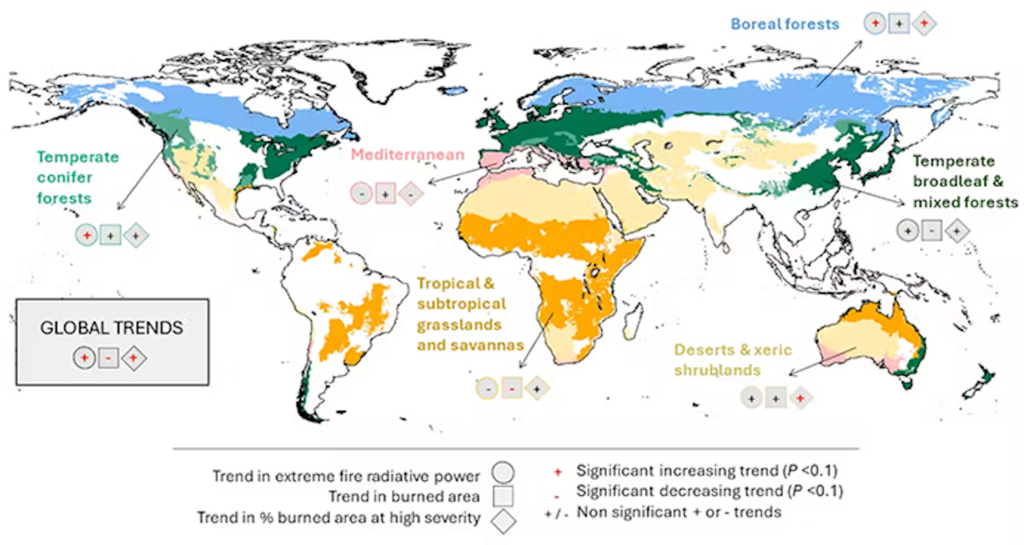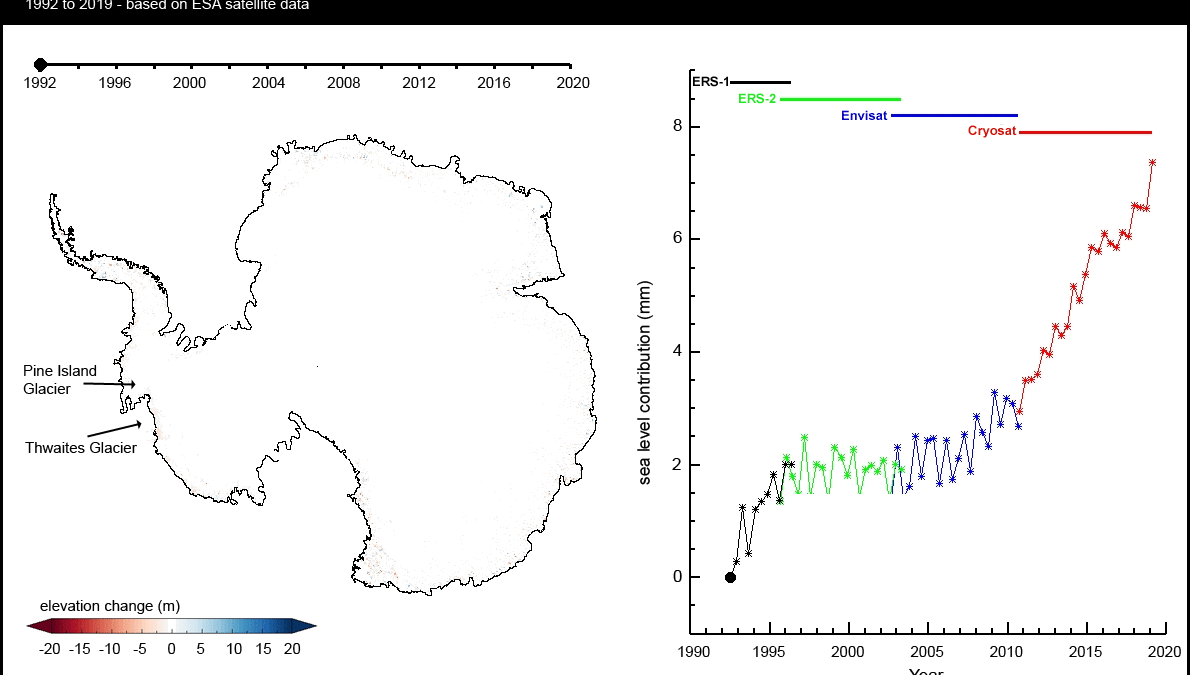Climate crisis driving exponential rise in most extreme wildfires – Frequency of extreme events doubled from 2003 to 2023 – “This is the effect of what we’re doing to the atmosphere, so action is urgent”

By Damian Carrington
24 June 2024
(The Guardian) – The climate crisis is driving an exponential rise in the most extreme wildfires in key regions around the world, research has revealed.
The wildfires can cause catastrophic loss of human life, property and wildlife and cause billions of dollars of damage. Scientists say this is climate change “playing out in front of our eyes”.
The analysis of satellite data showed the number of extreme fires had risen by more than 10 times in the past 20 years in temperate conifer forests, such as in the western U.S. and Mediterranean. It has increased by seven times in the vast boreal forests in northern Europe and Canada. Australia was also a hotspot for these devastating fires.
The scientists also found that the intensity of the worst wildfires had doubled since 2003, and that the six years with the biggest numbers of extreme fires had all occurred since 2017. On average across the globe, extreme wildfires have more than doubled in frequency and intensity over the past two decades.
The researchers also warned that the rise in the huge fires was threatening to create a “scary” feedback loop, in which the vast carbon emissions released by the fires cause more global heating, which causes more fires.
The new research helps resolve an apparent paradox, in that global heating has driven an unambiguous rise in hot, dry fire weather, but the area burned by wildfires has fallen. The researchers said that most fires were small, started by humans, caused relatively little damage and may be declining due to expansion of cropland and cuts in crop waste burning. Including all fires in global analyses therefore obscured the rapid rise in the most intense and destructive wildfires.
“The fingerprints of climate change are all over this rise,” said Dr Calum Cunningham at the University of Tasmania, Australia, who led the new study. “We’ve long seen model projections of how fire weather is increasing with climate change. But now we’re at the point where the wildfires themselves, the manifestation of climate change, are occurring in front of our eyes. This is the effect of what we’re doing to the atmosphere, so action is urgent.”

Cunningham said there were very significant increases in extreme wildfires in the conifer forests of the American west: “That’s concerning, because there’s a lot of people there living in very close proximity to these flammable vegetation types and that’s why we’re seeing a lot of disasters emerge.”
He added: “The concerning thing, especially with the really carbon-rich ecosystems, boreal forests, that are burning intensely, is that it’s threatening to create a feedback effect.”
The research, published in the journal Nature Ecology & Evolution, analysed data from NASA satellites that pass over the Earth four times a day. The researchers identified the 0.01% most extreme wildfires, measured by the energy released in a day, giving a total of almost 3,000 events. [more]
Climate crisis driving exponential rise in most extreme wildfires
Increasing frequency and intensity of the most extreme wildfires on Earth
ABSTRACT: Climate change is exacerbating wildfire conditions, but evidence is lacking for global trends in extreme fire activity itself. Here we identify energetically extreme wildfire events by calculating daily clusters of summed fire radiative power using 21 years of satellite data, revealing that the frequency of extreme events (≥99.99th percentile) increased by 2.2-fold from 2003 to 2023, with the last 7 years including the 6 most extreme. Although the total area burned on Earth may be declining, our study highlights that fire behaviour is worsening in several regions—particularly the boreal and temperate conifer biomes—with substantial implications for carbon storage and human exposure to wildfire disasters.
Increasing frequency and intensity of the most extreme wildfires on Earth


